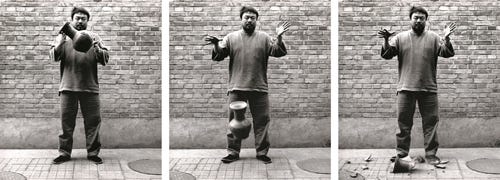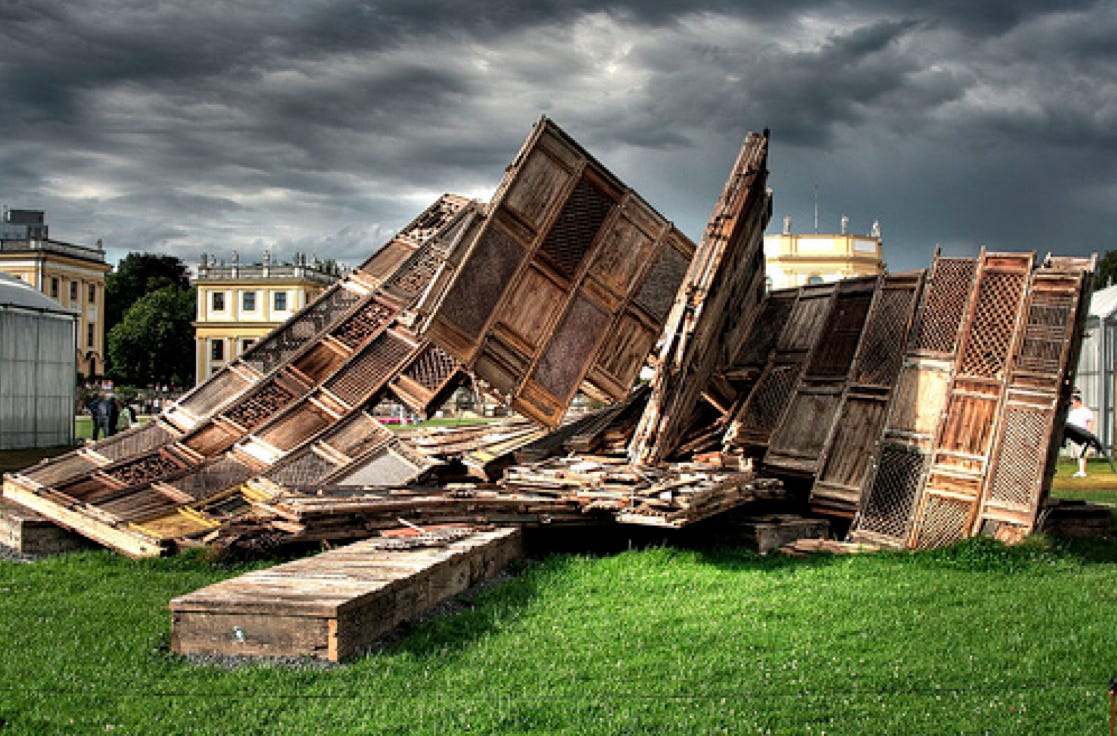Thesis Thoughts
On founders breaking urns...
The other night, my daughter and I were looking at Ai Weiwei’s new project on Instagram, Ai vs AI, in which an interviewer asks the artist a question, then puts the same question to ChatGPT. Both answers are published on the screen. It got me thinking about one of Ai Weiwei’s earlier works, Dropping A Han Dynasty Urn.
When I showed her this series of photos, my daughter was disgusted. Although she seemed very interested in Ai vs AI, she told me she doesn’t really like conceptual or performance art. Then, she admitted it was more about the artifact. She argued that the urn was beautiful and a piece of history, and it was wrong to drop it on the ground.
That’s the whole genius of the piece: it is deliberately disrespectful. I explained that Ai Weiwei dropped the urn in 1995, having moved to New York in the 80’s, possibly the most irreverent place on earth. After a childhood fraught by the persecution of his father, Ai Qing, a poet ex-communicated as counter-revolutionary, he knew China as a place capable of subjecting children and artists and everyday citizens to brutality and humiliation. Ai Weiwei remorselessly rejects the cultural significance of the urn to call into question our reverence for the past and our patrimony.
If everyone did this, we’d have no society. But some people need to do this. I think of these people as artists and inventors and, often, entrepreneurs. Entrepreneurs must remorselessly reject the past. They break the urns.
When you’re building a startup, you don’t break urns once. You break them all the time. Years ago, I read an excellent interview with Ai Weiwei about the sculpture, Template, which he showed at documenta 12. After its painstaking installation, the piece collapsed during a huge thunderstorm. The next morning, Ai Weiwei went to survey the wreckage, thought it looked nice and simply set about changing the promotional postcard.
This reflection reminds me of one of the coolest poems I’ve ever read about (entrepreneurial) thought, about how mistakes can turn into choices. It’s by Richard Wilbur and it’s called, Mind.
Mind in its purest play is like some bat That beats about in caverns all alone, Contriving by a kind of senseless wit Not to conclude against a wall of stone. It has no need to falter or explore; Darkly it knows what obstacles are there, And so may weave and flitter, dip and soar In perfect courses through the blackest air. And has this simile a like perfection? The mind is like a bat. Precisely. Save That in the very happiest intellection A graceful error may correct the cave.
If you got this far, you have a high tolerance for art! People in finance often think of the world of the arts as very far from the world of sciences. But great artists, like great scientific inventors approach the world with enormous creativity.
Let us know if you’re out there breaking urns…




Good post. "When you’re building a startup, you don’t break urns once. You break them all the time." .. and some of these Urns can fight, flight, do all sorts of other stuff!